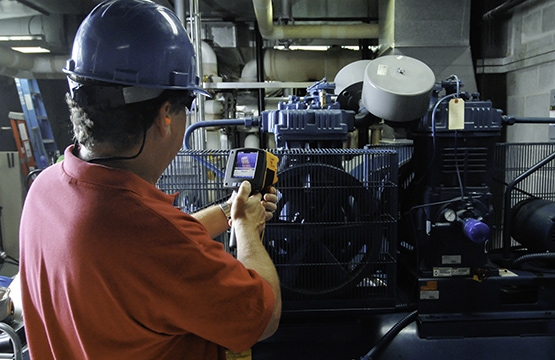

As a traveling service thermographer, I do not have very many opportunities to conduct follow-up inspections to repairs completed after my report is submitted. But, back in the day when I was working on one site full-time, I learned the benefit of doing follow-up inspections. Follow-ups are one of the best learning opportunities we have for both the individuals at the site (electricians, mechanics, engineering, and management) and the thermographer.
Take for example a report that you’ve compiled indicating a high resistance connection at the A phase load side fuse connection lug. You recommended a simple clean and tighten action. No problem arises – that is the normal recommendation, the electrician reports back that the work has been completed. Hopefully, your program has good communication in place between the trades and the PdM department. After the work has been completed you, being the dutiful thermographer, take your imager and escort (if required) and inspect the repair, to see if in fact the repair was successful or if another fault was either introduced or uncovered. This is an important step as some faults have enough energy to “mask” lesser faults. After your follow-up inspection you save the image and produce an “after action report. If all looks good, you close out the repair order, and let the trades know of the success!
But, if the original fault is still there, we need to find out why. Did the repair really get completed? Was the repair completed as recommended? It may be hard to believe but some of the trades and people do not trust infrared as a valid method for identifying faults. Some individuals will say that they completed the repair when they didn’t or they only complete what they think is needed. But the actual repair method needs to be determined. If the repairs were completed as instructed and a problem persists, it is possible that an incorrect action or location is to blame and we need to learn from a mistake. Don’t hide them, stand up and admit that there was a mistake analyzing the data and you want to understand how the mistake was made to prevent another in the future.
If there is no follow-up inspection, we cannot learn if our recommendations were correct nor can we give credit to the trades that have successfully completed the repairs. The feed back to the trades gives the IR program credibility and confidence. The management needs this information to learn of successes and continuing efforts to improve.
This applies to any inspection that is completed, i.e. electrical, mechanical, buildings, roofs, steam, etc. One of the best supporting reports is the before and after detailing what was the original recommendation and what was actually required to correct the fault.